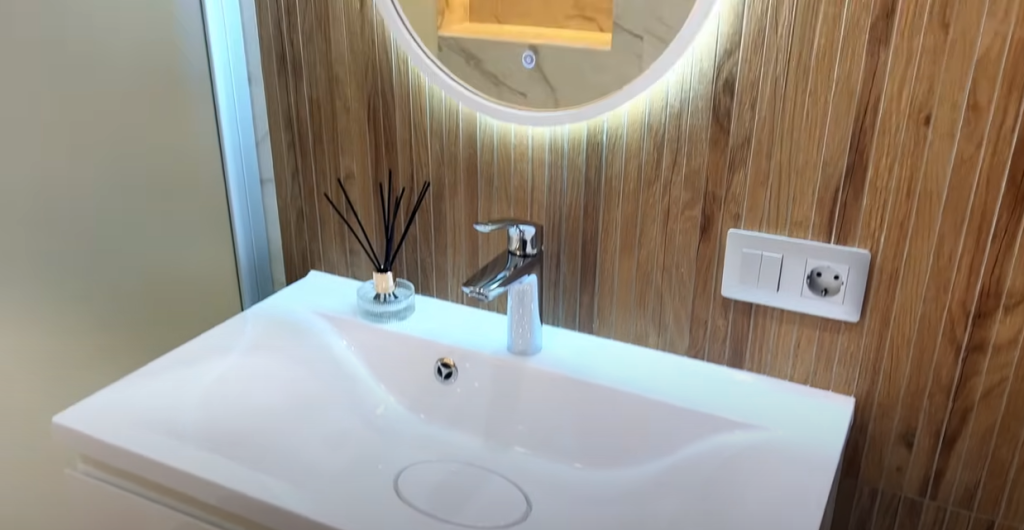
Best Bathroom Solutions in Modern Renovations
When planning a bathroom renovation, one of the first decisions to make is whether to keep a separate or combined bathroom. If your current setup is separate, it’s often best to keep it that way due to its practicality. However, if you have a combined bathroom and are considering splitting it, think carefully. The space might be too small, making a split less efficient. Ultimately, the choice depends on your personal preferences and needs.
Bathtub vs. Shower Podium
Choosing between a bathtub and a shower podium involves several considerations. Bathtubs generally take up more space than shower podiums. If budget constraints are a factor, a bathtub might be more economical. Shower podiums require additional expenses for drainage systems, waterproofing, and tiling. Additionally, a shower podium often needs glass enclosures, which can be costly.
For a bathtub, I recommend one made of cast marble for its smooth edges and better finish. Acrylic bathtubs tend to have poor sound insulation and are often uneven, while cast iron bathtubs, although well-insulated and warm, can also be uneven. The ideal bathtub length is 170 cm; if space is limited, 160 cm or even 150 cm can work, but smaller sizes can be impractical.
Shower Podium Size
For shower podiums, the minimum recommended size is 90×90 cm, though 100×100 cm is more comfortable. Smaller sizes might feel cramped unless you are particularly petite. If space is restricted, a dimension of 80×100 cm can still be comfortable.
Modern Sanitary Fixtures
Modern bathrooms often feature both traditional faucets and rain showers. A rain shower, for instance, can be a luxurious addition, making showering a relaxing experience. Ceiling-mounted lights should be strategically placed to avoid directly illuminating the shower area, which can be distracting. Opt for matte surfaces to reduce reflections.
Wall-Mounted Vanities
Wall-mounted vanities are preferable over floor-mounted ones. They not only look modern but also make cleaning easier. The ideal width for vanities is 80 cm, but 60 cm can suffice in tighter spaces.

Choosing Bathroom Fixtures
Fixtures come in various finishes—white, black, and chrome. White fixtures are practical as they show fewer water stains compared to black or chrome. Ensure you have adequate electrical outlets near the sink for convenience.
Mirrors and Lighting
A well-lit mirror is crucial. Consider mirrors with built-in lighting and anti-fog features. Always install an additional electrical switch for convenience.
Wall and Floor Materials
Tiles are the go-to material for bathrooms due to their water resistance. While some modern designs incorporate microcement or even special wallpaper, tiles, particularly large-format porcelain tiles (60×60 cm or 120×60 cm), remain the best choice. Ensure external tile corners are cut at a 45-degree angle for a cleaner finish.
Heated Floors
Installing heated floors is a worthwhile investment, especially in households with small children. It adds comfort and warmth to the bathroom space.
Epoxy Grout
For grout, epoxy is superior to cement-based grout. It’s more durable, although a bit more expensive and challenging to work with. Use silicone in internal corners and epoxy for external ones.
Towel Warmers
Opt for electric towel warmers instead of water-based ones to avoid issues related to thermal expansion and potential leaks. They are more versatile and can be installed anywhere.
Bath Screens
For a sleek look, install a tile screen for the bathtub instead of plastic ones. It’s more aesthetically pleasing and modern.
Niches and Storage
Incorporate niches in the bathroom for additional storage, especially in the shower area. They are practical for holding toiletries and add a contemporary touch.
Toilet Systems
Wall-mounted toilets are preferable for their aesthetic and space-saving benefits. They are sturdy and support up to 200 kg. Install a bidet or a hygienic shower for added convenience.
Leak Detectors
Install leak detectors in strategic areas such as under the sink, bathtub plumbing, and around water supply points. They help prevent water damage by alerting you to leaks early.
Sound Insulation
Soundproof your plumbing, especially if you live on lower floors of a multi-story building. This prevents noise from traveling through the building’s plumbing system.
Water Heaters
Consider a tankless water heater, which is compact and sufficient for short periods when hot water supply is interrupted.
Washer and Dryer
For laundry, invest in a good washer and a separate dryer rather than a combo unit. Combo units often do not perform as well as separate machines.
Final Thoughts
When renovating your bathroom, focus on practicality and durability. Choose materials and fixtures that withstand moisture and daily use. By investing in quality and considering your specific needs, you can create a modern, functional, and beautiful bathroom space.